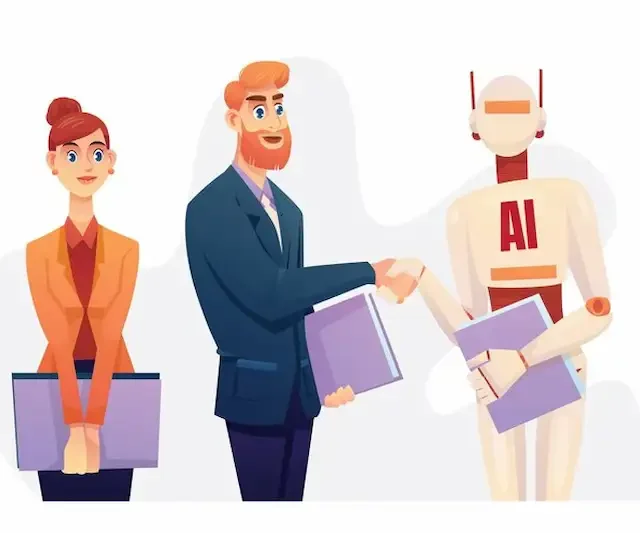6 Stages of Talent Acquisition Life Cycle

In today’s competitive job market, finding and securing top talent has become a critical endeavour for businesses striving to stay ahead. This pursuit is guided by the talent acquisition life cycle, a comprehensive framework that outlines the stages through which organisations identify, evaluate, and onboard new employees. By understanding and optimising this cycle, companies can streamline their hiring processes and attract candidates who not only possess the required skills but also align with the company’s culture and values.
In this article, we delve into the six key stages of the talent acquisition life cycle, shedding light on the intricate processes involved and offering insights into how organisations can enhance their recruitment strategies. Let’s get started!
What Does Talent Acquisition Life Cycle Mean?
The talent acquisition life cycle refers to the end-to-end process that organisations follow to identify, attract, evaluate, and onboard new employees. This strategic approach to recruitment is designed to ensure that the right candidates are hired for the right roles while minimising the potential for mismatched hires. From preparing the job requisition to onboarding the selected candidate, each stage plays a crucial role in not only filling vacant positions but also nurturing a talented and diverse workforce that contributes to the company’s long-term success.
Talent Acquisition Life Cycle Stages
The talent acquisition life cycle comprises six integral stages that collectively orchestrate the intricate dance of hiring the right talent for an organisation. Each stage plays a pivotal role in shaping the overall success of the recruitment process. Let’s delve into these stages one by one to understand their significance and the strategies employed to navigate them effectively.
1. Preparing
The first stage of the talent acquisition life cycle, “Preparing,” sets the foundation for the entire recruitment journey. During this phase, organisations meticulously outline their staffing needs by collaborating with HR professionals and hiring managers. This is the time when job roles, responsibilities, qualifications, and required skills are defined in detail.
Accurate and comprehensive job descriptions and profiles are crafted, serving as the cornerstone for the subsequent stages. By aligning the candidate search with the organisation’s strategic goals and job requirements, the Preparing stage ensures that the talent acquisition efforts are focused and purposeful.
2. Sourcing
With the groundwork laid in the Preparing stage, the “Sourcing” stage comes into play. This phase involves casting a wide net to identify potential candidates who possess the skills, experience, and cultural alignment needed for the organisation. Recruiters tap into a diverse range of channels, such as online job boards, social media platforms, industry-specific events, and employee referrals, to create a robust candidate pipeline.
The strategic use of keywords, tailored messaging, and targeted searches helps attract candidates who are a perfect fit. In the competitive landscape of talent acquisition, effective sourcing ensures that the organisation has access to a pool of qualified candidates.
3. Screening
Once a pool of candidates is gathered, the “Screening” stage takes centre stage. Here, recruiters and hiring managers meticulously review resumes, cover letters, and application materials to assess candidates’ qualifications and suitability for the role. Initial phone or video interviews may also be conducted to further evaluate candidates’ potential.
This stage is a crucial filter that separates candidates who meet the basic requirements from those who align more closely with the organisation’s values and culture. A well-executed screening process narrows down the selection, allowing the most promising candidates to move forward.
4. Selecting
The “Selecting” stage is where the recruitment process gets more intense. This phase involves comprehensive interviews, assessments, and evaluations to gauge candidates’ technical skills, problem-solving abilities, and cultural fit. Behavioural interviews, technical tests, and situational judgement assessments offer deeper insights into candidates’ capabilities.
Collaboration among various stakeholders is vital during this stage, as different perspectives contribute to a holistic evaluation. The Selecting stage culminates in the identification of the candidates who not only possess the necessary qualifications but also show the potential to thrive within the organisation.
5. Hiring
As the recruitment journey progresses, the “Hiring” stage becomes the focal point. At this juncture, selected candidates are extended job offers that encompass details about compensation, benefits, responsibilities, and other pertinent information. Transparent communication is paramount, ensuring that both parties are aligned on expectations.
The Hiring stage marks the official beginning of the candidate’s journey with the organisation. Clear and concise communication during this stage sets the tone for a positive and productive employer-employee relationship.
6. Onboarding
The final stage of the talent acquisition life cycle, “Onboarding,” wraps up the process by ensuring a smooth transition for the newly hired employees. Beyond paperwork and initial orientation, effective onboarding encompasses introducing the new hires to the organisation’s culture, values, workflows, and team dynamics.
This stage provides the necessary training, resources, and support for the employee to hit the ground running and integrate seamlessly into the team. A well-structured onboarding process sets the stage for long-term engagement and productivity, as the new employee feels welcomed and empowered from day one.
In summary, the talent acquisition life cycle is a comprehensive framework that guides organisations through the intricate journey of identifying, attracting, evaluating, and integrating new talent. By excelling in each of the six stages – Preparing, Sourcing, Screening, Selecting, Hiring, and Onboarding – businesses can secure top-tier candidates who align with their vision and contribute to their growth. This strategic approach to talent acquisition not only enhances the recruitment process but also shapes the future success of the organisation.
Ready to take your talent acquisition to the next level? Consider partnering with RecruitFirst, the leading outsourcing company in Jakarta. Our expertise can revolutionise your approach to recruitment, connecting you with top-notch talent that propels your organisation forward. Contact us today to embark on a transformative recruitment journey that will shape your company’s success!





